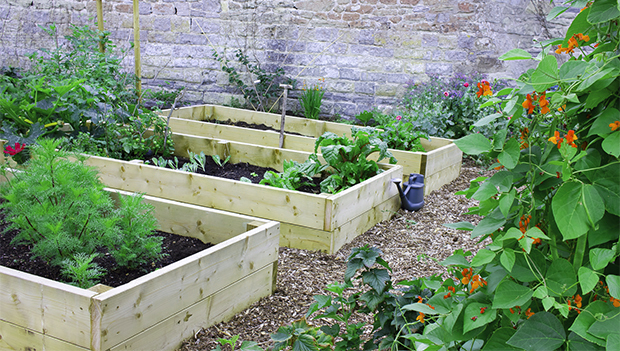5 Easy Steps—Let The Honey Bees Work For You
Beginning gardeners don’t often comprehend how important honey bees are to the growth and success of their garden.
I’ve found a big difference in how good my garden does based on how widespread the bees are that year. They work as great pollinators. Also, when we started bee keeping, our garden really blossom (and the honey was just amazing)!
Here are 5 simple steps to creating a bee-friendly garden.
Wild Diversity
Wildflowers are loved by honey bees. They evolved with them—especially the wildflowers that were native to your region.
Diversity is also liked by bees. The more colors as well as kinds you’ve got the more bees you’ll bring. As welcoming beacons for the honey bees put exquisite wildflowers around your garden.
And speaking of wild, bees like their dwellings to possess a little bit more grass, some twigs, a few muddy spots and puddles. So don’t be frightened to let things get a little cluttered.
Simply keep in mind that bees like open meadow-like areas, plots of wild clover, brush heaps, and mud puddles when it rains. Nothing insane-messy…only a enough to make the bees feel safe and like they possess the things they want.
The Best Flowers To Plant (Think in Colors)
Bees really love yellow, purple, blue, and white blooms. So more bees will be brought in by any flowers in those colours.
And bees adore these flowers so plant them abundantly:
- Agastache
- Aster
- Monarda
- Trifolium
- Rudbeckia
- Alyssum
- Asclepias
- Echinacea
- Geranium
- Papaver
- Sunflowers
- Hyacinth
- Dahlias
- Hollyhocks
- Marigold
Don’t forget veggie and fruit blossoms. This may add to the possibilities that are pollinating and attract bees into your paradise.
Some blossoming veggie and fruit plants:
- Cucumbers
- Squash
- Pumpkins
- Peppers
- Strawberries
- Blackberries
- Cherry trees
- Raspberries
And then of course there are specific herbs that help attract bees (read more about herb gardening on my herb-centric site post!):
- Lavender
- Mint
- Sage
- Catnip
- Fennel
- Sage
- Rosemary
- Coriander
- Bee Balm
Make Room for a Bee Bath
No, I’m not joking. Bees want to drink and take baths too!
Bird baths are not good because they are exceedingly deep for bees. Bees desire shallow places or an island to wash themselves on the edge of.
To build a budget bird-bath, use a broad dish, which isn’t too deep, and then fill it with flat rocks. Put the tray somewhere near your attractive flowers. Bees can use this source of water, safely from the stone, while they’re occupied making your garden beautiful.
Bees Like To Feel Safe
All of us need a safe home-base.
Even if you don’t do beekeeping, setting a brightly coloured wooden box for protection close to your garden will help bees remain secure and nest while they pollinate your garden.
There are real hives you can purchase, like this awesome one from springhillnursery.com, or you can purchase nesting tubes and line them in a brightly colored box.
Don’t Use Pesticides If You Can Help It
No one likes pests, but many pesticides (even organic) really are very toxic for bees. It’s much better to use natural techniques including trapping and handpicking or using covers for your rows.
In the event that you absolutely must use pesticide, don’t spray the blossoms and attempt to get targeted pesticides (such as grasshopper or caterpillar unique).
